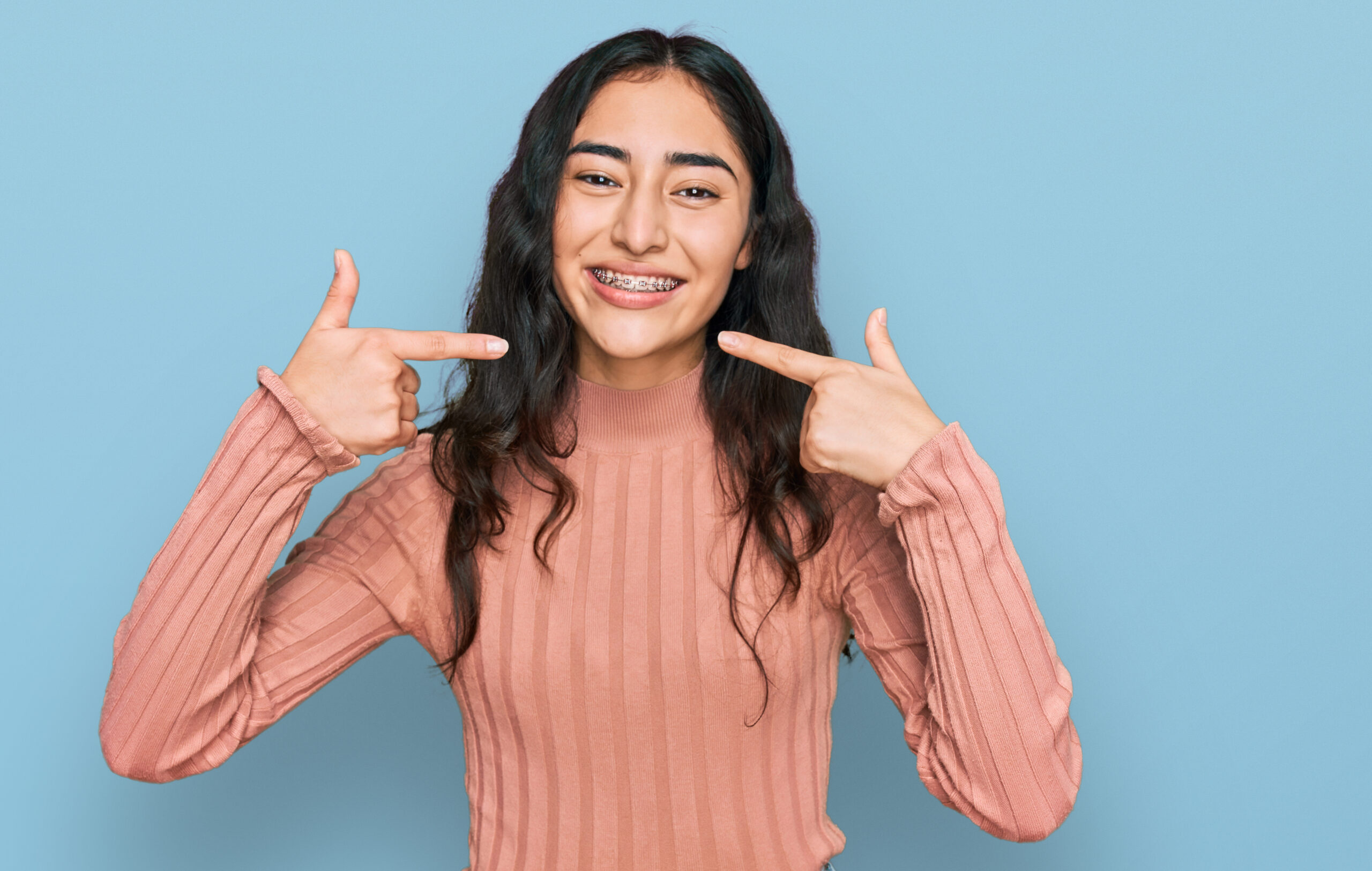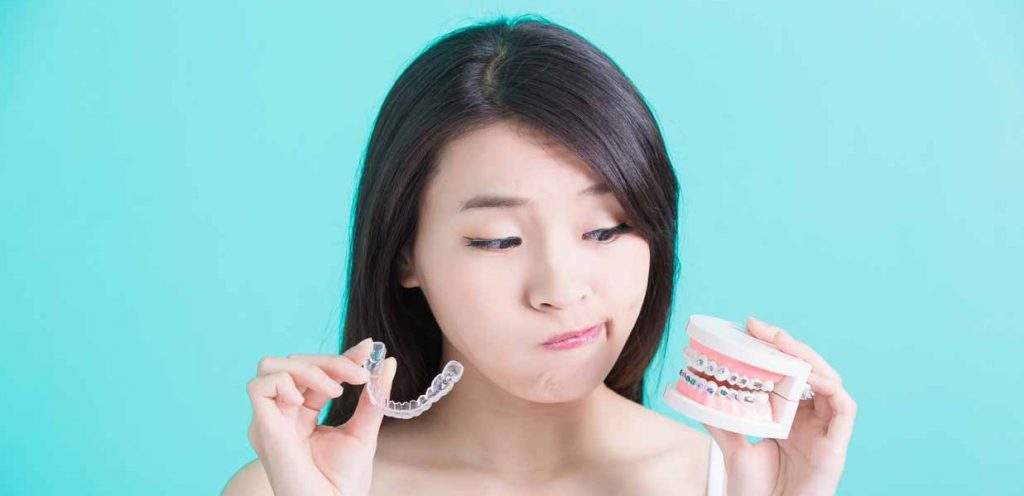Self-ligating braces use a built-in sliding mechanism to hold the archwire in place instead of elastic ties. This design reduces friction between the wire and brackets, which can mean fewer adjustments and potentially shorter appointment times. While they look similar to traditional braces, the way they function offers some distinct advantages for certain patients.
At Lazzara Orthodontics, we evaluate whether self-ligating braces make sense for your specific orthodontic needs. Our Jacksonville Beach office serves families throughout Jacksonville Beach, Neptune Beach, and Atlantic Beach with various treatment options, from traditional appliances to modern alternatives that fit your lifestyle and clinical goals.
How Self-Ligating Braces Work
Traditional braces require small elastic ties or metal ligatures to secure the archwire to each bracket. Your orthodontist replaces these ties at every adjustment appointment as they wear out and lose elasticity. Traditional metal braces have used this system effectively for decades, but the elastic ties create friction that resists tooth movement.
Self-ligating brackets incorporate a tiny door or clip that closes over the archwire. This door holds the wire securely while allowing it to slide more freely through the bracket. The reduced friction means teeth can move with lighter forces, which some patients find more comfortable during the initial adjustment period.
Two types of self-ligating brackets exist: passive and active. Passive self-ligating brackets allow the wire to move freely within the bracket slot, creating very low friction. Active self-ligating brackets use a spring clip that presses against the wire, providing more control over tooth movement in certain situations. Your orthodontist selects the appropriate type based on your treatment needs.
Benefits of Self-Ligating Technology
Appointment efficiency improves with self-ligating braces because your orthodontist doesn’t need to replace elastic ties at each visit. Opening and closing the bracket doors takes less time than removing and replacing dozens of individual elastics. This streamlined process can reduce chair time by several minutes per appointment.
Oral hygiene becomes slightly easier without elastic ties that can trap food particles and plaque. The smooth bracket design has fewer places for debris to accumulate, though you still need to brush and floss thoroughly around the brackets and wires. Maintaining excellent oral hygiene remains essential throughout your orthodontic treatment.
Lower friction may reduce discomfort for some patients. The lighter forces required to move teeth through self-ligating brackets can feel gentler, especially in the first few days after an adjustment. However, individual pain tolerance varies, and some patients experience similar discomfort levels regardless of bracket type.
Treatment time might be shorter in select cases. The reduced friction allows teeth to move more efficiently in certain situations, potentially decreasing overall treatment duration by a few months. However, treatment length depends primarily on the complexity of your case rather than the type of brackets used.
Comparing Self-Ligating and Traditional Braces
Appearance differs minimally between the two bracket systems. Self-ligating brackets tend to be slightly smaller than traditional brackets, but both types are clearly visible on your teeth. If aesthetics matter significantly to you, ceramic braces or clear aligners like Invisalign and Clarity Aligners might better suit your preferences.
Cost typically runs higher for self-ligating braces compared to traditional metal braces. The brackets themselves cost more to manufacture, and this expense passes through to patients. The price difference varies by practice and geographic location, but you can expect to pay several hundred dollars more for self-ligating technology.
Treatment capabilities remain similar between both systems. Self-ligating braces can address the same orthodontic issues as traditional braces, including crowding, spacing, bite problems, and jaw alignment concerns. The choice between systems often comes down to your orthodontist’s preference and assessment of which technology works best for your specific case.
Effectiveness shows comparable results in most clinical studies. Research indicates that both traditional and self-ligating braces achieve excellent outcomes when used appropriately. The orthodontist’s skill and treatment planning matter more than the bracket system itself in determining your final results.
Who Makes a Good Candidate
Complex orthodontic cases may benefit from self-ligating technology. Patients with severe crowding or bite issues that require significant tooth movement can sometimes experience more comfortable treatment with the lower-friction system. The reduced resistance allows teeth to move more freely through difficult phases of alignment.
Adults seeking efficient treatment appreciate the shorter appointment times that self-ligating braces offer. If you have a busy schedule and want to minimize time away from work or other commitments, the streamlined adjustment process provides a practical advantage.
Patients with sensitive teeth sometimes find self-ligating braces more comfortable. The lighter forces required to move teeth may reduce soreness, though this benefit varies by individual. Some people notice a significant difference, while others experience similar discomfort regardless of bracket type.
Young teens and children can use self-ligating braces just as effectively as adults. The technology works well across all age groups, and pediatric orthodontics often incorporates various bracket systems based on each patient’s needs and treatment goals.
What to Expect During Treatment
Initial placement takes slightly longer than traditional braces because the orthodontist must carefully close each bracket door. However, subsequent adjustment appointments typically proceed faster since no elastic ties need replacing. Most patients adapt to the streamlined appointment process quickly.
Oral care instructions remain the same as with traditional braces. You’ll need to brush after every meal, floss daily with special orthodontic flossers, and avoid hard or sticky foods that could damage the brackets. The self-ligating mechanism doesn’t change these fundamental care requirements.
Retention follows the same protocol regardless of which bracket system you used during active treatment. After your braces come off, you’ll wear retainers to maintain your new tooth positions. The retention phase proves just as important as the active treatment phase in ensuring long-term results.
Comprehensive Orthodontic Care at Lazzara Orthodontics in Jacksonville Beach
Our team offers multiple treatment options to match your clinical needs and personal preferences. Dr. John Lazzara earned his Doctor of Dental Surgery from LSU School of Dentistry in 1996 and completed his orthodontic residency and Master of Science degree at St. Louis University, specializing in bite alignment and jaw function. Dr. Amy Poblenz graduated from Nova Southeastern University with her DMD in 2009, completed a craniofacial research fellowship focusing on cleft lip and palate repairs, and earned her Master of Science degree and orthodontic specialty certification from Nova Southeastern University in 2012. Both doctors are Diplomates of the American Board of Orthodontics, distinguishing them as two of the area’s few board-certified orthodontists, and maintain active memberships in leading dental associations to stay current with the latest advances in orthodontic care.
We serve families throughout Jacksonville Beach, Neptune Beach, and Atlantic Beach with comprehensive orthodontic solutions. During your consultation, we’ll evaluate whether self-ligating braces, traditional braces, or another treatment option works best for your situation. We also offer flexible financing with down payments as low as $400 and 0% financing options to make treatment accessible. Contact our Jacksonville Beach office to schedule your evaluation and learn which orthodontic approach will help you achieve your smile goals most effectively.









